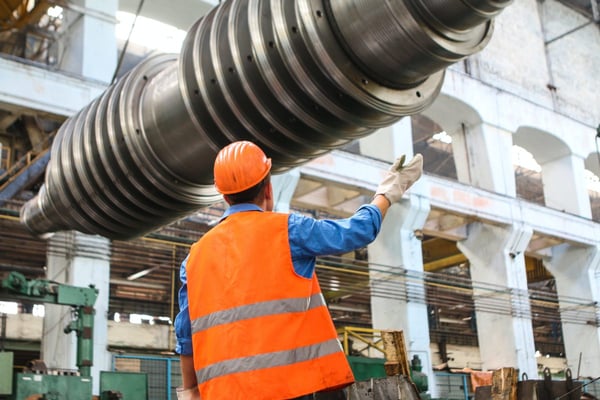Proper use of construction equipment is key to the success and safety of every project. In this installment of a four-part series, we will cover reflective gear, hand protection and foot protection. There are other types of protective clothing that should be worn but for the purposes of this article we will focus on the aforementioned. For additional information and suggestions about best practices, note that your insurance company may be a good resource. These pieces of equipment aren’t just important to project completion, but also vital to the safety of contractors on job sites. Being able to see in the dark, as well as be seen by others in the dark is paramount during shortened winter days and overnight jobs. Gloves and footwear are essential on a variety of job sites to ensure the safety of contractors and prevent injury. Knowing when to use this equipment and how to use it properly is crucial to the success of the project as well as the livelihood of the laborers.
Reflective Gear
Reflective gear is paramount to the safety of anyone working at night, in fog, in the snow or other inclement weather, and even during normal sunlight. This gear is called high-visibility apparel for a reason, its primary function is to make it so others can see you. Whether you’re working alongside a busy road, in an area that is notorious for fog or when it is dark or becoming dark out, reflective gear makes it so that anyone passing by can see you. Typically, this gear is made with lightweight fabric for ease of use, but there are options for winter weather as well.
There are three classes of reflective gear, broken down by PKSafety.com. Class 1 is for low-impact areas, Classes 2 and 3 have more stringent requirements based on traffic flow, speed limits and weather differences. As with any safety equipment, following the guidelines of the manufacturer is key to the successful use. The same applies to reflective gear. Know which class of vests you need to provide your laborers based on the area where they are working. It’s for their safety, and your protection.
Hand Protection
Gloves. Anytime someone thinks of hand protection, they think of gloves. But what kind of gloves do you need? Winter gloves? Gloves that provide electrical protection? Gloves that assist in preventing lacerations? There are many types of gloves which provide protection from various hazards on a construction site. Gloves for chemical use, heavy-duty rubber gloves for cement work, welding gloves, insulated gloves, etc.
The first order of business is to select the appropriate type of glove for the job. The second order of business is to ensure the gloves fit snugly and comfortably without limiting movement or range of motion. According to ConstructConnect.com, the hand is the most often injured body part on a job site. Ensure that your workers keep their gloves on by making sure the fit is right! When in doubt, always refer to the manufacturer’s instructions for the most accurate information.
Foot Protection
Most construction workers, even if they are new to the profession, will likely already own steel-toed of composite-toed boots. If they don’t, you will want to ensure they have a pair by making it a requirement upon hire. Composite and steel-toed boots protect workers feet from tools, materials or equipment that falls or is dropped. Make sure that all footwear is slip-resistant with puncture-resistant soles to protect against slips and puncturing the foot with a wayward nail.
Ensuring worker safety is a primary goal for any construction firm. Construction sites are dangerous by nature, protecting the people who work on job sites ensures timely project completion, fewer delays, less worry about labor shortages and decreased costs. Reflective, hand and foot protection are only a few of the construction safety equipment available. Be sure to follow the correct protocols for your job type and review all manufacturer’s guidelines with workers to achieve maximum safety for all parties.

Recent Posts
- Spec Home Loans: Complete Guide to Construction Financing for Builders
- Spec Construction Loans: A Spec Line of Credit Is Worth the Paperwork
- Spec Homes and Pre-Sale Homes: Relative Benefits for a Spec Builder
- Spec Construction Success: Insights for the Investor Builder
- How Is a Spec House Different From Other Kinds of House Construction?
